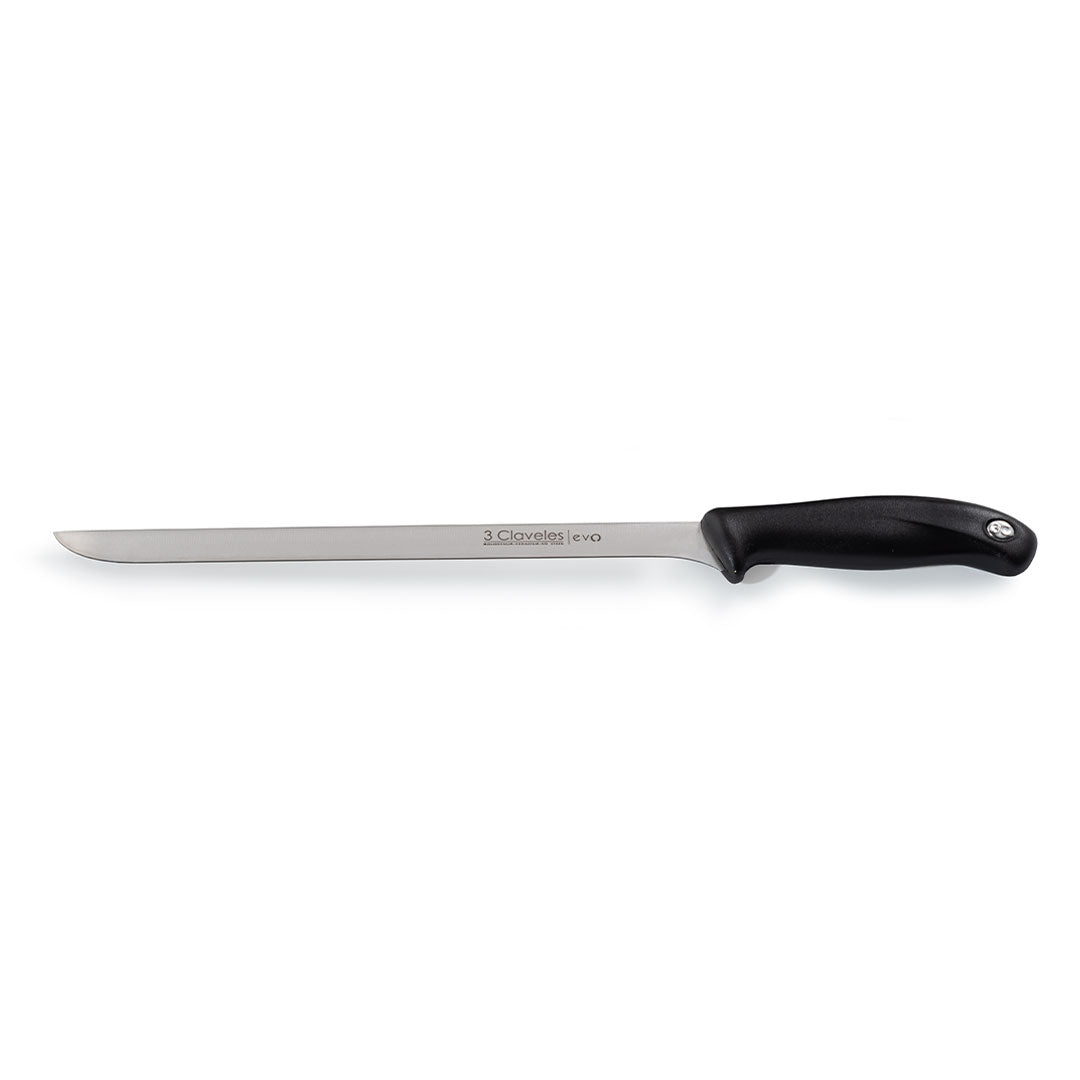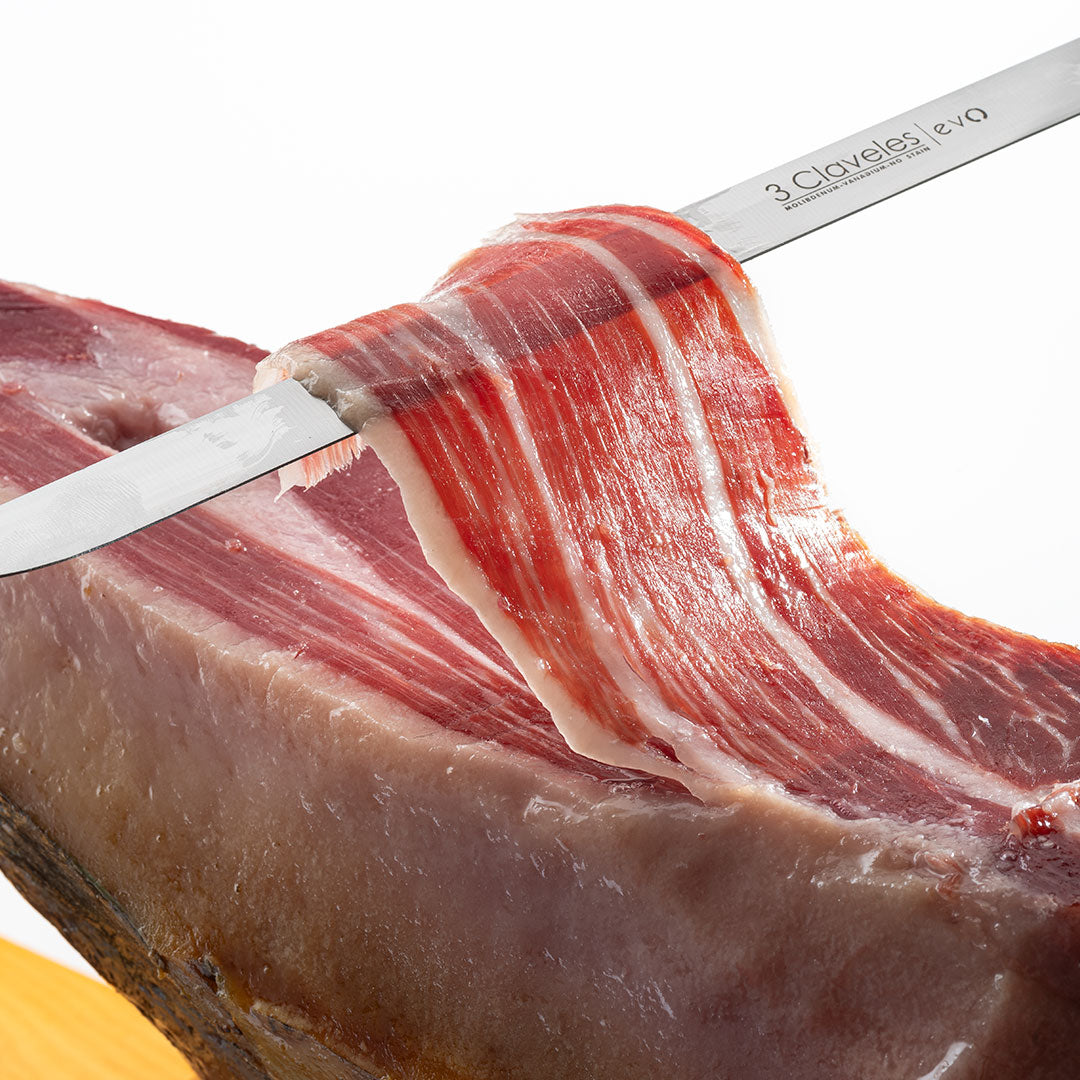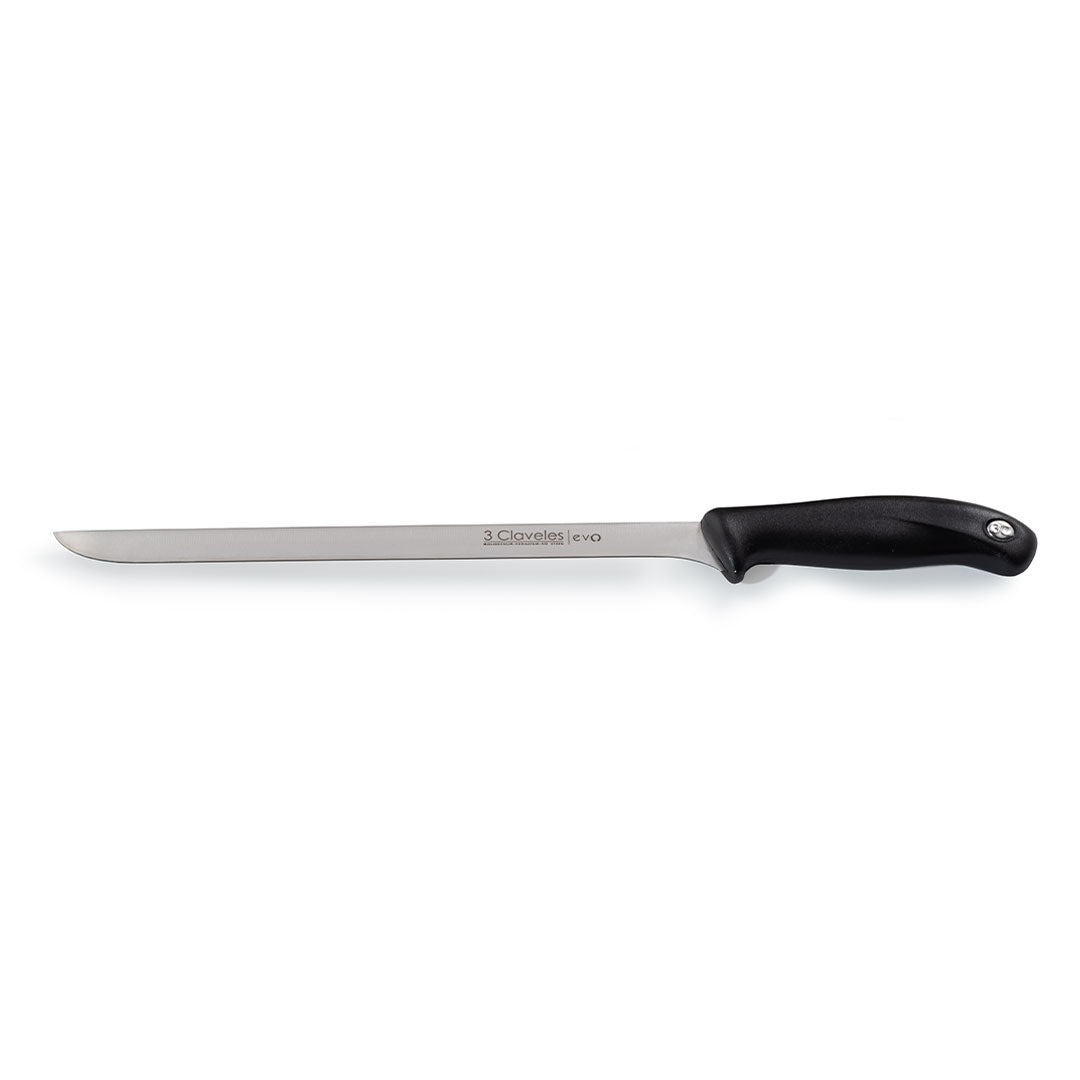
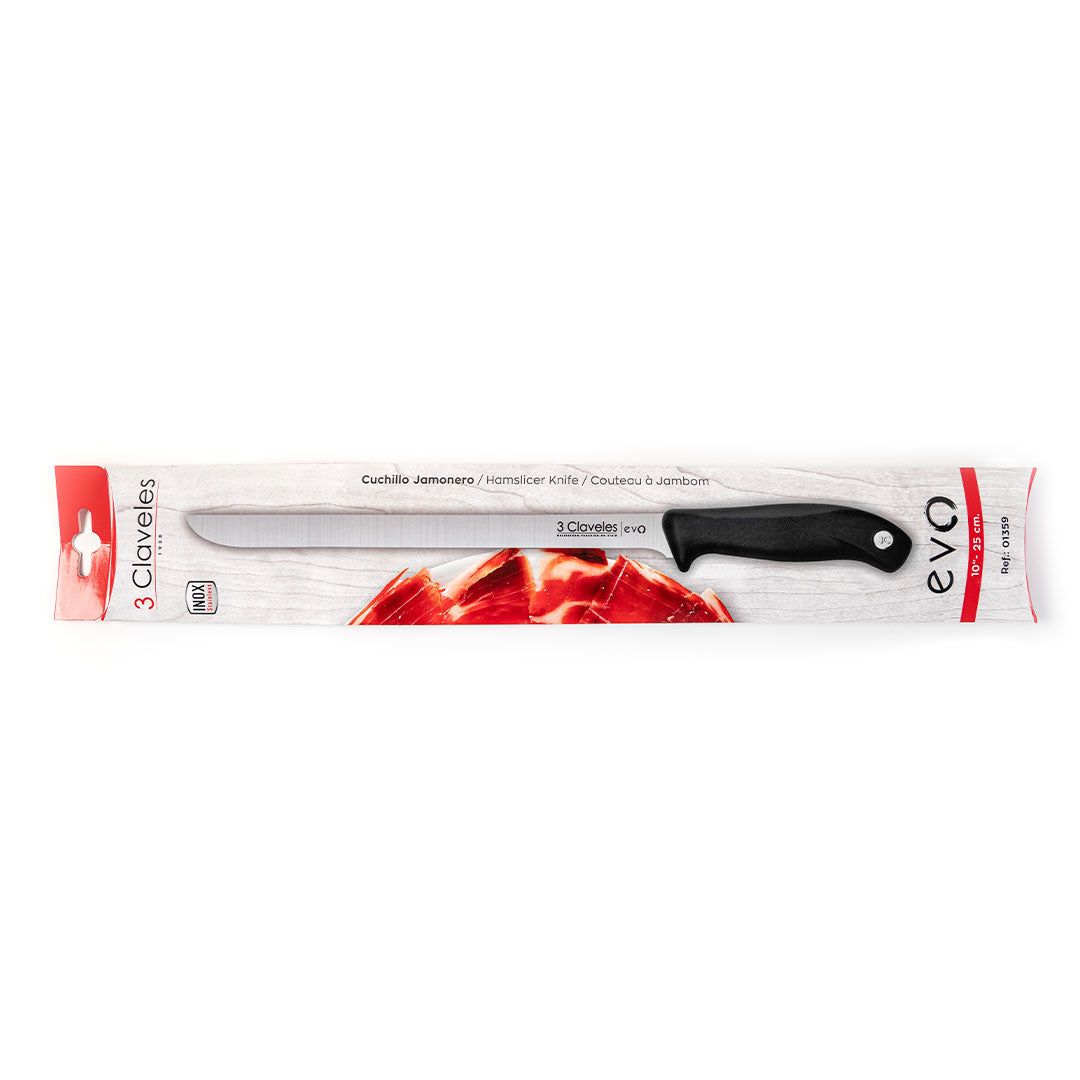
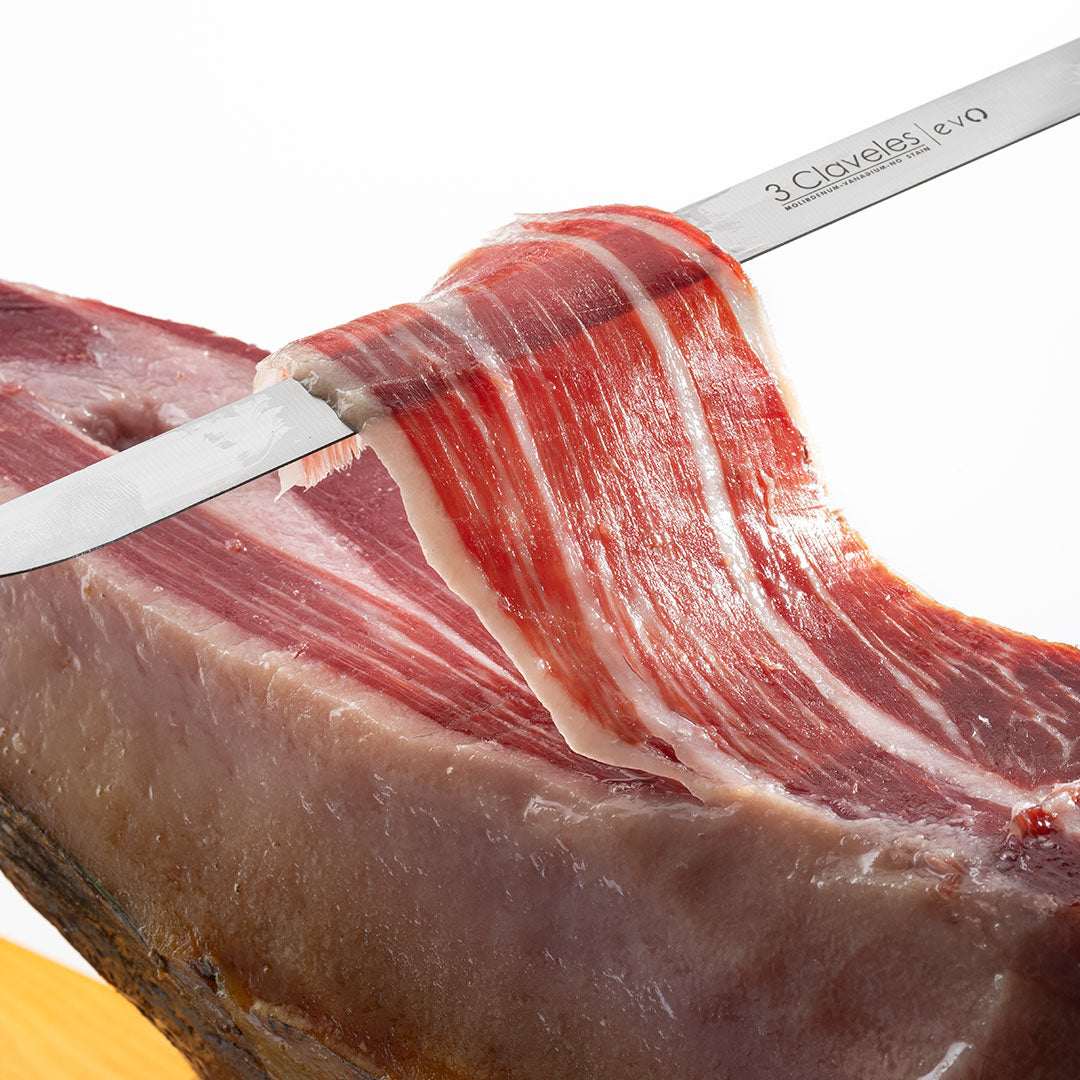
DESCRIPCIÓN
Tools for a ham lover
To enjoy a good ham is easy, just buy a sachet of sliced Pata Negra, open and put in your mouth, but if you are one of the lovers of the world of ham, you will always prefer to buy a whole ham and cut it to taste at home. Well, for that you need some basic tools, the ham holder and of course the knife.
The ham knives have a long, narrow and flexible blade. Most knives are made of stainless steel, a good quality, flexible and non-corrosive material. They can end in a round or sharp point and, although the round one is less dangerous, the most common thing is to find them with a pointed end. Remember that only with the ham knife properly prepared and well sharpened, we will obtain slices with the perfect thickness.
Ham cut with a knife
It is important to bear in mind that the slicing of ham is as important as any other moment in the process of making an Iberian ham, because if it is not done properly, it could end up with the nuances of our star product. "Hand cutting has, unlike machine cutting, a certain liturgy that makes it more enjoyable.... It has, like all craft or manual activities, a human connotation, a feeling, an energy, an “I don’t know what” that machines do not have, no matter how precise they may be. This is the explanation that Enrique Tomás himself offers us in the book Jamón for Dummies.
What is a Jamón and how is it made?
A jamón is the result of dry curing a pig's hind leg in salt. Depending on the type of pig and its diet, the months of curing vary substantially and its taste will also vary. Due to the large amount of meat in the same jamón, we will find different flavours: the “maza” is the softest part, the “contramaza” the tastiest and as we approach the bone we find more intensity.
Once we have the pig's leg ready, the first thing we have to do is prepare it for salting. The “cook” (the expert as we call them here) makes a v-cut on the pig's rind and decides how much external fat to leave. The more fat the leg has, the less salt it absorbs and the sweeter it gets. Once the previous operation has been performed, the leg is buried in salt for an average of two weeks. If the cook decides to extend this period, the jamón will be tastier. From that moment on, depending on the type of jamón we are going to make, the characteristics of the leg and the flavour we want to obtain, the leg will be hung in the special cellar to dry until it is optimum for consumption.
GARANTÍA Y POLÍTICA DE DEVOLUCIÓN
Para saber cuál es nuestra política de devolución y reembolso clica aquí.


